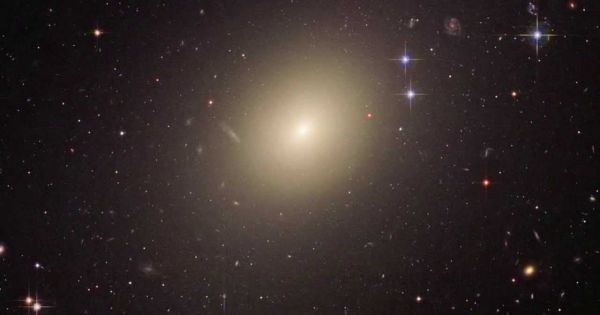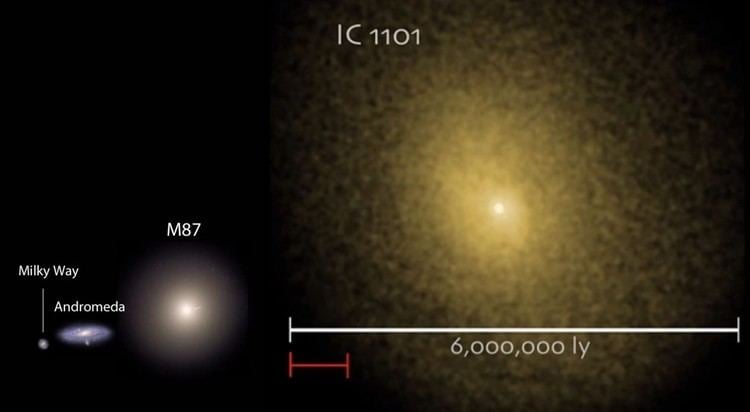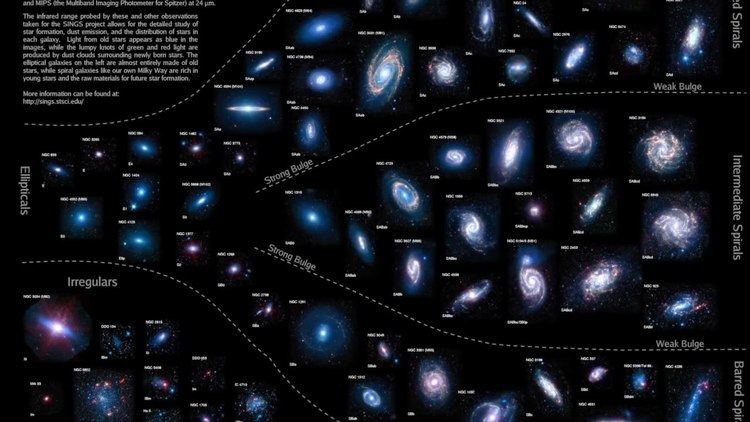Right ascension 15 10 56.1 Apparent mass ~2,500,000 billion M☉ | Declination +05° 44′ 41″ Magnitude 14.73 Apparent magnitude (V) 14.73 | |
 | ||
Redshift 6998779470000000000♠0.077947±0.000087 Helio radial velocity 23,368 ± 26 km/s (14,520 ± 16 mi/s) Galactocentric velocity 23,395 ± 26 km/s (14,537 ± 16 mi/s) Similar Abell 2029, IC 1011, VY Canis Majoris, UY Scuti, TrES‑4b | ||
The biggest galaxy in the universe ic 1101 space engine
IC 1101 is a supergiant elliptical galaxy at the center of the Abell 2029 galaxy cluster, approximately 320 megaparsecs (1.04 billion light-years) from Earth.
Contents
- The biggest galaxy in the universe ic 1101 space engine
- The largest galaxy in the universe ic 1101
- Characteristics
- Discovery
- References

The largest galaxy in the universe ic 1101
Characteristics

The galaxy is classified as a supergiant elliptical (E) to lenticular (S0) and is the brightest galaxy in A2029 (hence its other designation A2029-BCG; BCG meaning brightest cluster galaxy). The galaxy's morphological Type is debated due to it possibly being shaped like a flat disc but only visible from Earth at its broadest dimensions. However, most lenticulars have sizes ranging from 15 to 37 kpc (50 to 120 thousand ly).

IC 1101 is among the largest known galaxies, but there is debate in the astronomical literature about how to define the size of such a galaxy. Photographic plates of blue light from the galaxy (sampling stars excluding the diffuse halo) yield an effective radius (the radius within which half the light is emitted) of 65 ± 12 kpc (212 ± 39 thousand ly). The galaxy has a very large halo of much lower intensity "diffuse light" extending to a radius of 600 kpc (2 million ly). The authors of the study identifying the halo conclude that IC 1101 is "possibly one of the largest and most luminous galaxies in the universe."

Like most large galaxies, IC 1101 is populated by a number of metal-rich stars, some of which are seven billion years older than the Sun, making it appear golden yellow in color. It has a bright radio source at the center, which is associated with a massive black hole.
Discovery
The galaxy was discovered on 19 June 1790 by the British astronomer Frederick William Herschel I. It was catalogued in 1895 by John Louis Emil Dreyer as the 1,101st object of the Index Catalogue of Nebulae and Star Clusters (IC). At its discovery, it was identified as a nebulous feature. Following Edwin Hubble's 1932 discovery that some of the "nebulous features" were actually independent galaxies, subsequent analysis of objects in the sky were conducted and IC 1101 was therefore found to be one of the independent galaxies.
